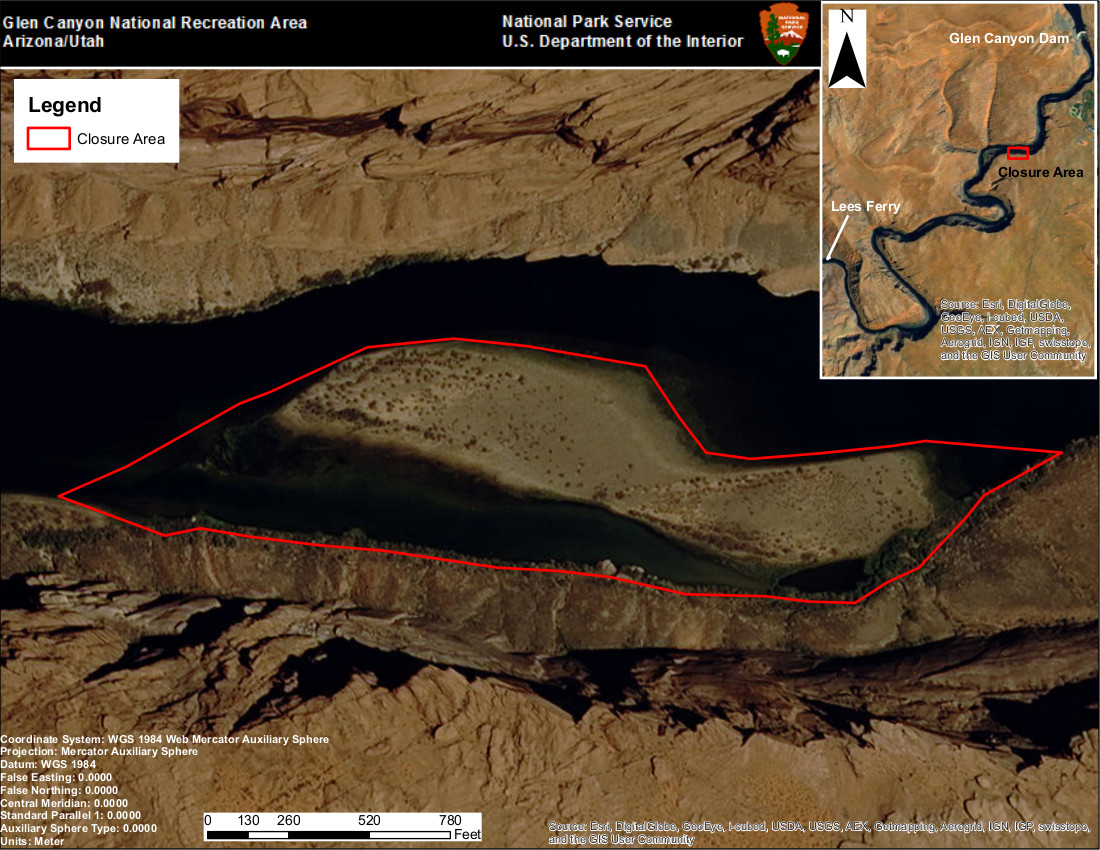
PAGE, Ariz. — The National Park Service and Arizona Game and Fish Department will administer two treatments of the fish toxin rotenone to eliminate invasive Green Sunfish (Lepomis cyanellus) from a backwater slough.

The slough is located on the Colorado River within Glen Canyon National Recreation Area, three miles below the Glen Canyon Dam. The first treatment is planned between Nov. 2 and 6, followed by a second treatment ten days later to address fish that may have hatched after the first treatment.
The treatments will be applied by AGFD biologists, pending approval by the Arizona Game and Fish Commission.
The cobble bar area surrounding the slough, the slough itself and a short distance up- and downstream will remain closed to the public for the duration of both treatments. The closure is marked by buoys and signs. The river itself will not be closed.
In July, AGFD biologists discovered an unusually large, reproducing population of invasive Green Sunfish in the slough. Green Sunfish are prolific, with a single female producing up to 10,000 eggs. They are also voracious predators of native fish and their eggs.
Biologists with the AGFD, NPS, U.S. Geological Survey, U.S. Fish and Wildlife Service and Bureau of Reclamation determined that Green Sunfish pose a threat to native fish including the Humpback Chub (Gila cypha). A rapid response action is necessary to eradicate the population of sunfish before it spreads downstream into critical habitat for the endangered Humpback Chub.
Two subsequent removal efforts using electrofishing, seine netting and trapping were conducted in August but failed to deplete the population despite removing over 3,000 fish. Biologists from NPS and AGFD constructed and installed a large block net at the downstream end of the main slough to minimize the escape of Green Sunfish.
After carefully analyzing alternative methods for control, agencies authorized a short-term targeted treatment with the fish toxin rotenone.
“We are joined by our partner agencies in a rapid response effort to contain and eliminate a population of invasive Green Sunfish, which poses a serious threat to native fish and the endangered Humpback Chub downstream in Grand Canyon National Park,” said Acting Glen Canyon National Recreation Area Superintendent Lindy Mihata.
The treatment will be carefully planned and conducted to minimize exposure to rotenone to protect the health and safety of humans, the environment, and livestock. Prior to the treatment, tests will be conducted to determine the minimum effective concentration of rotenone for use during the treatment.
Rotenone is a natural substance derived from plant roots. It has been effective at eliminating localized populations of Green Sunfish, including in the Colorado River Basin. Since 1990, AGFD has used rotenone as a fish removal tool in 22 waters to support conservation of native fish, control invasive species and to improve angler opportunities. The environmental consequences of rotenone are minor, except to fish and invertebrates.
Between eight and 30 gallons of rotenone will be applied to treat the slough. Fish will be removed from the area following treatments. An impermeable fabric barrier will be installed at the mouth of the slough for the duration of the two treatments to minimize exchange of water with the river. Potassium permanganate, a chemical used to purify drinking water, will be added to the slough, and into the river just below the fabric barrier to neutralize the rotenone.
Should any rotenone enter the main channel, it will immediately be diluted to concentrations that are insignificant to wildlife or humans, due to the volume of flow in the Colorado River, which will be held at 9,000 cubic feet per second by the BOR for three days during the treatments.
Email: [email protected]
Twitter: @STGnews